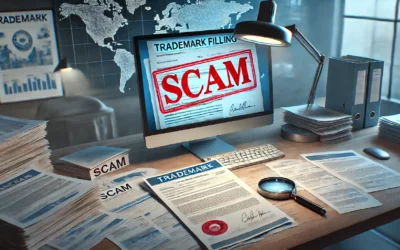A trademark cannot be registered if it’s not distinctive. However, it can acquire distinctiveness through use, making it registrable. For example, trademark DATING.COM has acquired distinctiveness in the EU through use, and EUIPO has accepted it as a registrable trademark. Just as a trademark can acquire distinctiveness, it can also lose it.
Many entrepreneurs think that if their brand becomes so famous that others use it as a generic name, it is a sign that they have created something great and valuable. It’s a badge of honour. Why else would others use your brand name?
When Microsoft launched Bing search engine, Steve Ballmer said he liked the name because it has the potential to “verb up”, i.e. becoming a word synonymous with making online searches. The king of the search engine market, Google, took a contrary view. In its trademark guidelines it instructs on the proper use of the Google trademark:
“Use the trademark only as an adjective, never as a noun or verb, and never in the plural or possessive form.”
Marketers think that a brand name becoming generic is a good thing and it’s easy to understand why. It means your brand is equated with a product category itself, and the brand name is everywhere to be seen. It’s constant free advertisement. While this is true, the proponents fail to see the other side of the coin.
The flip side of a generic brand name
Just as non-distinctive names can become distinctive, also distinctive names can become non-distinctive. If a trademark becomes a generic, a common name in the trade for a product or service in respect of which it is registered, the rights to that trademark are lost.
This means that your brand ceases to be yours, and can be used by others to promote their own services. It’s equivalent to having a factory, where your competitors could also manufacture at your expense.
Brand is often the most valuable asset in a company, and the brand becoming generic destroys the value that has been built in the brand over the years. The brand gets “socialised”, available for even competitors to use.
Many companies spend a lot of money fighting against that. Velcro Companies even made a music video “Don’t Say Velcro” that went viral on YouTube.
Here are some big brands that are now common property (at least in some countries):
– Aspirin (Bayer)
– Cellophane (Dupont)
– Escalator (Otis)
– Les Paul (Gibson)
– Laundromat (Westinghouse)
– Trampoline (Griswold-Nissen)
– Videotape (Ampex Corp.).
When trademarks become generic terms, they will cease to function as trademarks and lose their value. The name will no longer be associated with a particular company that makes the product, but rather with the product itself regardless of who the maker is. You should do everything to avoid your brand name becoming a generic name.
Two risk factors
There are two factors that can increase the likelihood of a brand getting genericized. They are independent of each other, but the risk is particularly high when they are both present.
Suggestive and catchy brand names. Brand names that are suggestive are in particular danger zone. This is because since they already describe the product or service in some indirect manner, the leap from that to being outright generic name is shorter than with invented names or arbitrary names. It is more convenient to use suggestive brand names in generic sense because the name can be linked with the product or service with less mental effort. This is also why suggestive names function very well as trademarks.
For example, term “SPINNING” (spin) is a suggestive brand name for cycling related products and services and one that easily lends itself to be used as a generic name for indoor cycling. It is tempting for gyms to offer “spinning classes” as the name itself already suggest that it has to do with bicycles. It’s easier to say “spinning class” than “SPINNING® indoor bicycle class). The owner of the SPINNING trademark, Mad Dogg Athletics, is working relentlessly to keep the trademark from becoming generic.
New innovation for which no generic name exists. If you invent something completely new and no generic name exists for it, there is risk that your brand name will become the generic name for that category. This is also the case where a generic name exists, but it’s not very usable. For example, if it’s overly technical or otherwise less easy to use and remember than the brand name, the risk is that the brand name will replace the generic term.
How to prevent genericide?
The first step is to make sure that genericide is not your goal. As said above, there are people who think it’s the ultimate sign of a brand’s success. So the first thing is to understand that genericide is the death of a brand, something that should be avoided.
Genericide does not happen instantly. It’s a process that typically takes years and during that time the brand is highly visible. That’s the good news. The bad news is that once the ball starts rolling, it is very difficult to stop. When generic use of a trademark starts picking up speed, it’s like a snowball coming down the hill. It gets larger and faster, and in the end it’s impossible to stop. The key is to make sure the ball doesn’t get rolling in the first place.
When coming up with new innovations, it is important that there is a generic name for that new innovative product or service. If there only is the brand name, there’s a risk that the brand name will be used also as a generic name for the product. If no generic name exists (it’s rare but can happen), the innovator should invent a generic name and give it away to be freely used by all.
The generic name should be catchy and easy to remember so that it will take hold. If the invented generic name is not catchy enough, it will not be used and the risk remains that the brand name will become also the generic name for the product. “Tablet” is a great example of an easy generic name for an iPad. “Rebound tumbler” is an opposite example. It was the generic name for what is now called trampolines.
Secondly, trademarks must be used as trademarks, that is to say to indicate the commercial name or source of the product, not to describe the product or to indicate product type.
When courts are finding that a trademark has been genericized, very often they also find that part of the reason is that the owner has itself used the trademark to indicate the type of product rather than as its commercial name. For example, when ESCALATOR was pronounced generic in the US, one important factor was that Otis had used the term not as a trademark but as a common generic term. Their marketing materials referred to “Otis elevators and escalators” and their patent applications used the term “escalator” to indicate a product type rather than its commercial name.
Here are some practical things you can do:
Use ™ and ® symbols as appropriate. If your trademark is not registered, use the ™ symbol. If it is registered, use the ® symbol.
Use capital letters or at least capital initial letter for trademarks. This separates them from ordinary nouns.
Don’t use your trademarks are generic terms. Otis said in their advertisement that “millions of daily passengers on the Otis elevators and escalators…”. Here the term is used as a noun to indicate the type of product.
Don’t use plurals or possessive forms. Using a trademark in a plural or possessive form indicates that it is not the commercial name but a generic term (see the above Otis example). Of course, if the trademark is in plural (British Airways, Chupa Chups) or possessive (McDonald’s, Jack Daniel’s), then that’s the correct way to use the it.
Follow the trademark with the generic name of the product, or omit the trademark altogether if using the generic name is cumbersome. For example, rather than “millions of people with Toyotas…”, say “millions of people with Toyota cars…”. Sometimes the trademark can be just omitted. Rather than using the trademark Escalator, Otis could’ve said “millions of daily passengers on the Otis products…”.
Sometimes it’s not all in your hands
Especially if you choose a suggestive trademark for a product that does not have a generic name, there is a risk that others will start to use your trademark as a generic name for the product. You have to be vigilant in monitoring how your trademark is used and if you see that others are using it as a generic term, you should take immediate action against that. If the ball starts rolling (more and more companies or people use the name as a generic term), it will be difficult or even impossible to stop it.
Conclusion
Having a trademark becoming a generic term destroys the value that has been accrued in the brand. Trademarks are valuable because they give you the exclusive right to your brand name. Trademark protection means that nobody can use your trademark or a similar trademark without your permission. Genericide destroys this exclusivity making the trademark available for everyone to use. Going back to the earlier example, it’s like investing in a factory and letting competitors use it for free. The most important thing in avoiding genericide is to use your trademark correctly and to intervene if others use it incorrectly or without permission.
Having a generic trademark is not a badge of honor. It’s a testament to neglect and mismanagement.
Perfume decanting – legal or not?
Pefrume decanting operates in the grey area of trademarks. Read here what the legal risks are and whether perfume companies can object to that.



